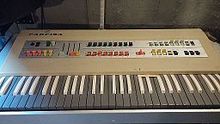
Peter Joseph Andrew Hammill is an English musician and recording artist. He was a founder member of the progressive rock band Van der Graaf Generator. Best known as a singer-songwriter, he also plays guitar and piano and produces his own recordings and occasionally those of other artists. In 2012, he was recognised with the Visionary award at the first Progressive Music Awards.

Guy Randolph Evans is an English drummer. He is best known as a member of the progressive rock band Van der Graaf Generator, appearing on each of their studio albums. He is also a member of Echo City and Subterraneans.

Godbluff is the fifth album released by English progressive rock band Van der Graaf Generator. It was the first album after the band reformed in 1975 and was recorded after a European tour.

Pawn Hearts is the fourth album by English progressive rock band Van der Graaf Generator, released on 12 November 1971 on Charisma Records. The original album features just three tracks, including the side-long suite "A Plague of Lighthouse Keepers". The album was not commercially successful in the UK, but reached number one in Italy. It has since seen retrospective critical praise and was reissued on CD in 2005 with extra material.
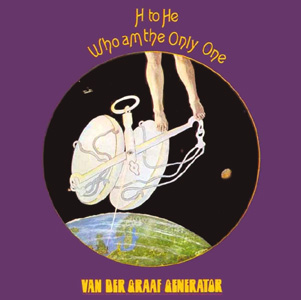
H to He, Who Am the Only One is the third album by the British progressive rock band Van der Graaf Generator. It was released in 1970 on Charisma Records.

Still Life is the sixth album by English progressive rock band Van der Graaf Generator, originally released in 1976. It was their second album after reforming in 1975, the first being Godbluff. One live bonus track was added for the 2005 re-mastered re-release. A new re-master, with 5.1 surround sound re-mixes by Stephen W Tayler, was released on 3 September 2021.
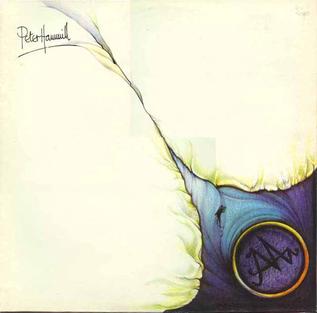
The Silent Corner and the Empty Stage is the third album by British singer-songwriter Peter Hammill. It was released on Charisma Records in 1974, during a hiatus in the activities of Hammill's progressive rock band Van der Graaf Generator. Other ex-members of Van der Graaf Generator also perform on the recording.
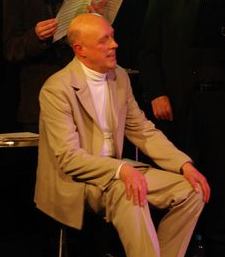
Christopher John Judge Smith is an English songwriter, author, composer and performer, and a founder member of progressive rock band Van der Graaf Generator. Initially working under the name Chris Judge Smith, he has been known simply as Judge Smith since 1994. After Van der Graaf Generator, he has written songs, stage musicals and operas, and from the early 1990s on he has released a number of solo CDs, including three "Songstories".

The Quiet Zone/The Pleasure Dome is the eighth album by British progressive rock band Van der Graaf Generator. Released in 1977, it was their last studio album before their 2005 reunion. The album features a more energetic, new wave sound than its three immediate predecessors, anticipating singer and songwriter Peter Hammill's late 1970s solo work.

Vital: Van der Graaf Live is the first live album by English progressive rock band Van der Graaf Generator. It was recorded 16 January 1978 at the Marquee Club in London and was released in July, one month after the band's 1978 break-up. The album was credited under the abbreviated name Van der Graaf, like the previous year's The Quiet Zone/The Pleasure Dome (1977), and featured the same line-up plus newcomer cellist/keyboardist Charles Dickie, who had officially joined the band in August 1977, and original saxophonist and flautist David Jackson, who re-joined the band for this recording.

Hugh Robert Banton is a British musician and electronic organ builder, most widely known for playing organ and keyboards with the group Van der Graaf Generator.

The Aerosol Grey Machine is the debut studio album by English progressive rock band Van der Graaf Generator. It was first released in the United States in 1969 by Mercury Records.

World Record is the seventh studio album by the British progressive rock group Van der Graaf Generator, originally released in 1976 on Charisma Records. Bonus tracks were added for the 2005 rerelease.

Present is the ninth studio album by British progressive rock band Van der Graaf Generator, released in 2005. It was the band's first studio album since The Quiet Zone/The Pleasure Dome in 1977, and the first with the 'classic' line-up since World Record in 1976. The Charisma Records label was re-activated for its release, as well as a re-issue series of Van der Graaf Generator's catalogue and Peter Hammill's solo releases from 1972-86.
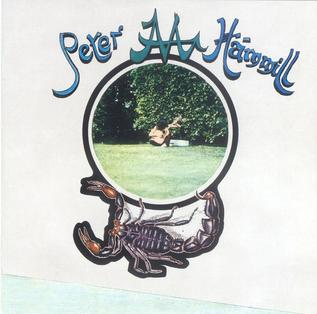
Chameleon in the Shadow of the Night is the second solo album by British singer-songwriter Peter Hammill. It followed in the aftermath of the breakup of Hammill's band Van der Graaf Generator, and other ex-members of Van der Graaf Generator perform on the album.

Van der Graaf Generator are an English progressive rock band, formed in 1967 in Manchester by singer-songwriters Peter Hammill and Chris Judge Smith and the first act signed by Charisma Records. They did not experience much commercial success in the UK, but became popular in Italy during the 1970s. In 2005 the band reformed, and are still musically active with a line-up of Hammill, organist Hugh Banton and drummer Guy Evans.

Trisector is the tenth studio album by the British rock group Van der Graaf Generator. It was released on Virgin/EMI Records in March 2008. It is the first album the band has recorded as a trio. Saxophonist David Jackson departed the band following the 2005 tour.
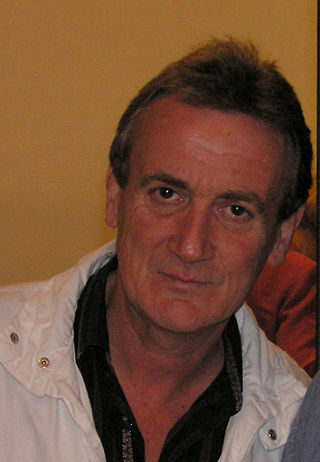
Nic Potter was a British bassist, composer and painter, best known for his work with the group Van der Graaf Generator in the 1970s.
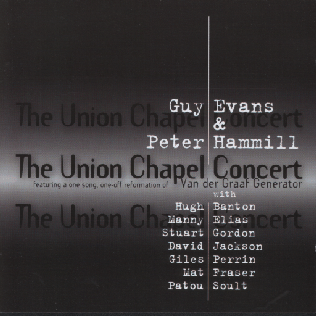
The Union Chapel Concert is a live album by Guy Evans and Peter Hammill, recorded in the Union Chapel in London, 3 November 1996, and released as a double CD in March 1997. The album is noteworthy because it is the first time the four ex-members of Van der Graaf Generator, Hammill, Evans, Hugh Banton and David Jackson, played together in front of a paying audience since the band had broken up in 1978. The subtitle on the front of the album reads: "featuring a one song, one-off reformation of Van der Graaf Generator." David Jackson and Hugh Banton were unannounced guests and played a Soundbeam-medley and a Samuel Barber Adagio for strings on the church organ respectively. All songs that evening were played in varying line-ups. Only "Lemmings" was played by Hammill, Evans, Banton and Jackson.
"A Plague of Lighthouse Keepers" is a song by the English rock band Van der Graaf Generator, from their fourth album Pawn Hearts (1971). It is a concept piece over 23 minutes long, which comprises the whole B-side of the album. "A Plague of Lighthouse Keepers" evolved in the studio, recorded in small sections and pieced together during mixing. The song has many changes in time signature and key signature, and even incorporates some musique concrète.



